Physical Address
304 North Cardinal St.
Dorchester Center, MA 02124
Physical Address
304 North Cardinal St.
Dorchester Center, MA 02124
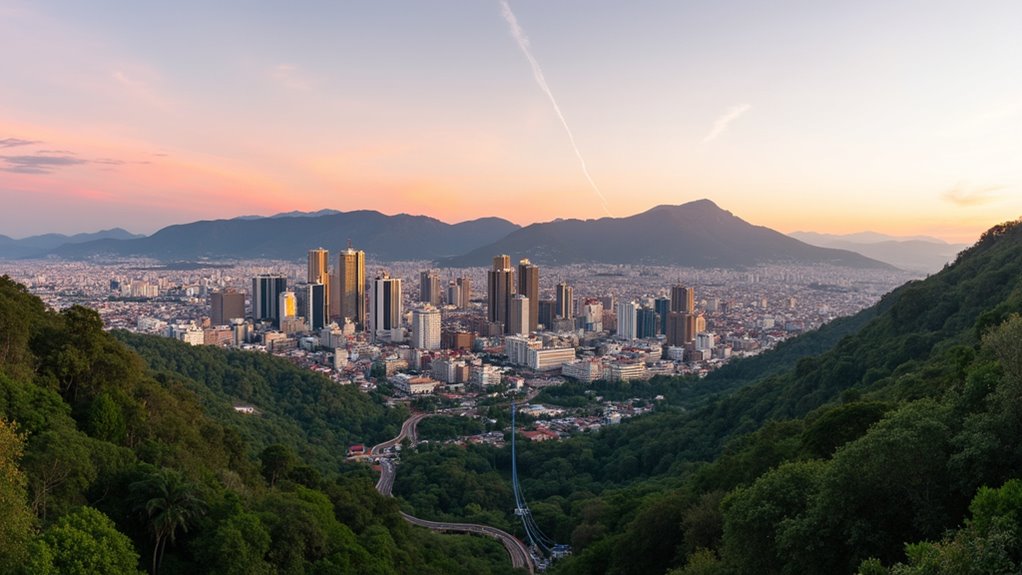
Hidden gems across South America offer extraordinary safety for travelers, but which Colombian city's transformation will surprise you most?
South America’s safest cities include Medellín (Colombia), where transformation has drastically reduced crime; Cuenca (Ecuador), with its colonial charm and low crime rates; Florianopolis (Brazil), an island paradise with Canadian-level safety; Montevideo (Uruguay), known for stable governance; Buenos Aires (Argentina), with visible police presence; Santiago (Chile), featuring modern urban development; and Ushuaia (Argentina), where remote location limits criminal activity. These destinations offer you both security and authentic South American experiences while you explore the continent’s diverse cultures.
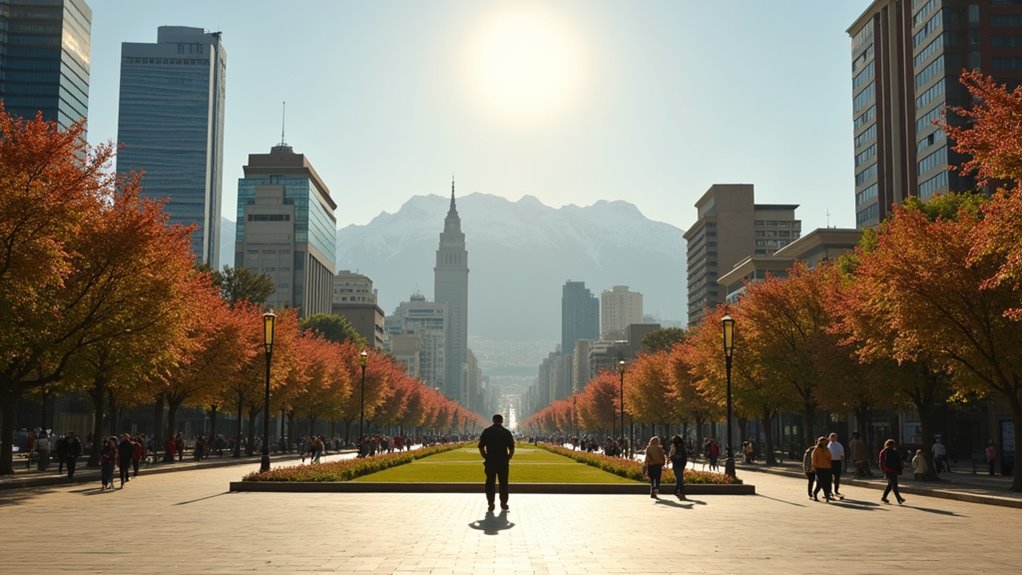
When planning your South American adventure, safety often tops the list of concerns. Fortunately, several cities stand out for their security and tourist-friendly environments.
Montevideo leads the pack as one of South America’s safest capitals, boasting low violent crime rates and stable governance. Santiago, Chile follows closely with rare incidents of violent crime affecting travelers. Buenos Aires offers visible police presence in tourist districts, while Asunción has established effective community policing programs.
Safety flourishes in South America’s urban gems, where thoughtful governance and community focus create havens for travelers.
Don’t overlook Ushuaia, Argentina’s remote gem, where the tourism-dependent economy naturally limits criminal activity. Colonia del Sacramento provides visitors with a tranquil, retirement village atmosphere and extraordinarily low crime rates.
In these cities, you’ll find that basic precautions are sufficient—stick to well-lit areas, use official transportation at night, and keep valuables secure. For solo female travelers and digital nomads, Buenos Aires consistently ranks as a top choice.
Nestled in the southern Ecuadorian highlands, Cuenca is prominent as one of the safest destinations in South America for both travelers and expats. With approximately 450,000 residents, this colonial gem boasts considerably lower crime rates than other Ecuadorian cities.
You’ll appreciate Cuenca’s well-maintained infrastructure, effective law enforcement, and well-lit public spaces that contribute to its secure environment. The city’s economic stability, low unemployment, and strong tourism sector further enhance safety conditions.
What makes Cuenca truly special is its community spirit. Locals take pride in their UNESCO World Heritage city, actively participating in community policing initiatives. This UNESCO-listed city is renowned for its stunning colonial architecture and exceptional safety record for visitors.
While Ecuador faces broader security challenges, Cuenca remains a peaceful haven where you can comfortably explore stunning colonial architecture and vibrant cultural festivals without constant security concerns.
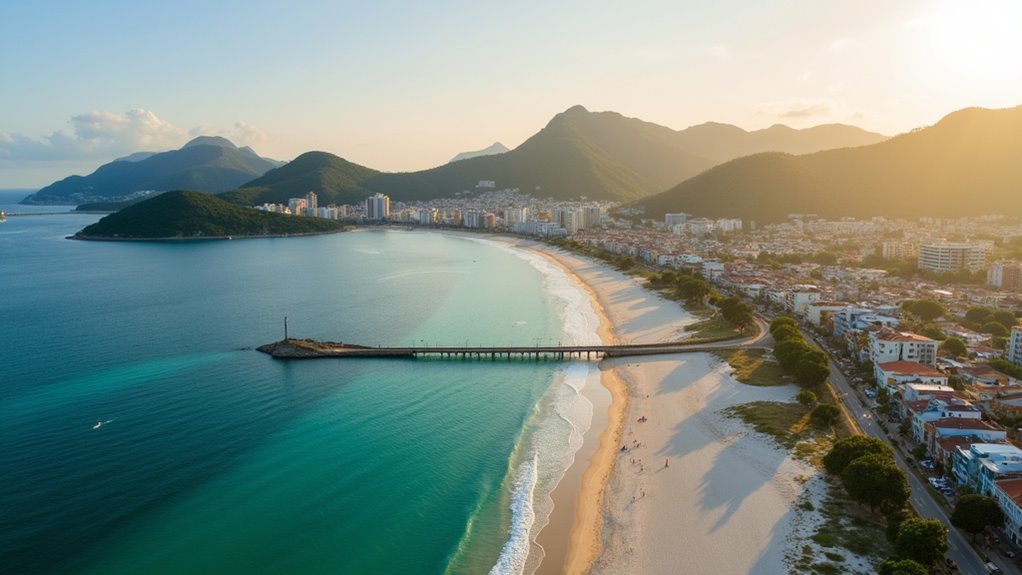
Located on Brazil’s southern coast, Florianopolis is prominent as a remarkably safe haven in a country often associated with high crime rates.
With a crime index of 47.1 for 2025, it’s comparable to safe Canadian cities like Edmonton and St. Catharines.
You won’t find Florianopolis among Brazil’s top 20 most violent cities. While property crimes like break-ins remain the primary concern, violent crime rates fall well below the national average of 23.6 per 100,000.
The city’s island geography naturally limits urban sprawl and access points, contributing to its security profile.
You’ll appreciate the visible police presence, especially during tourist seasons and festivals. This safety record stands in stark contrast to cities like Rio de Janeiro, which has a much higher crime index of 75.7.
Take standard precautions—secure valuables and avoid isolated areas at night—but you can explore with confidence compared to other Brazilian urban centers.
Once infamous as the violent epicenter of Pablo Escobar’s drug empire, Medellín has undergone one of the most remarkable urban safety transformations in modern history. Homicide rates have plummeted to their lowest levels in 40 years, from 43 to 26 per 100,000 inhabitants.
You’ll find increased police presence in tourist areas, making it generally safe to visit. The dismantling of powerful cartels through government efforts has significantly contributed to the city’s security improvements. However, remain vigilant as certain districts like El Poblado have seen rising crime rates. Be particularly cautious with dating apps, where criminals use scopolamine to incapacitate and rob travelers.
To stay safe, avoid drug-related activities, exercise caution in unfamiliar areas, and don’t flaunt valuables. Despite lingering challenges, Medellín’s economic growth and community initiatives have helped attract 1.4 million visitors in 2022, cementing its status as a transformed destination.
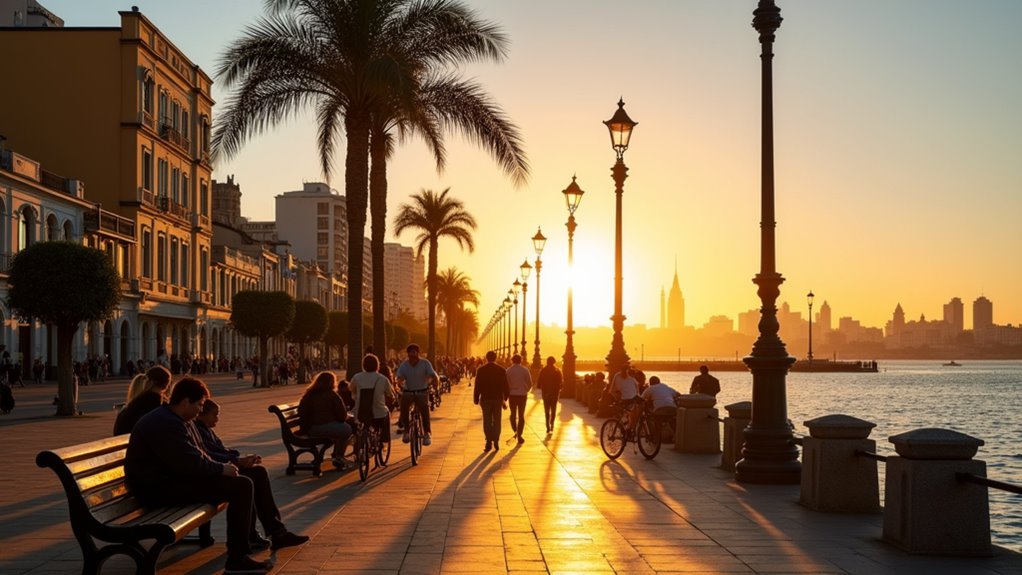
Known for its laid-back atmosphere and European-inspired architecture, Montevideo stands as one of South America’s safest capitals despite some concerning statistics.
While the city has a moderate crime index of 56.3 and residents report increasing concerns about theft, it remains considerably safer than many regional counterparts.
Uruguay’s stable economy, strong social cohesion, and effective public services contribute notably to Montevideo’s relative safety.
The government is actively combating crime through improved policing strategies and addressing root social causes.
This effort has contributed to the consistent decline in overall crime rates from 2018 to 2021 throughout the country.
As a visitor, you’ll find Montevideo generally welcoming and secure.
Police maintain a visible presence throughout the city, especially in tourist areas.
Like anywhere, basic precautions are recommended, but you can comfortably enjoy the city’s abundant cultural attractions with minimal worry.
Buenos Aires presents a fascinating contrast to Montevideo, offering a vibrant metropolis where safety measures and cultural opulence coexist. With a World Crime Index rating of 45 in 2024, the city ranks safer than many U.S. counterparts.
You’ll notice the significant police presence throughout the city, contributing to its reputation as tourist-friendly. While petty theft occurs in crowded tourist areas, violent crime remains relatively low. The city has experienced a 13.86% decline in crime rates from 2020 to 2021, reflecting positive safety trends.
When visiting, exercise standard precautions: stay aware of your surroundings, avoid displaying valuables, and use reputable transportation. Be particularly cautious in the Conurbano region, which experiences higher crime rates.
Despite some economic challenges that occasionally impact safety, Buenos Aires maintains effective emergency services and well-maintained public spaces that help create a secure environment for both residents and visitors.
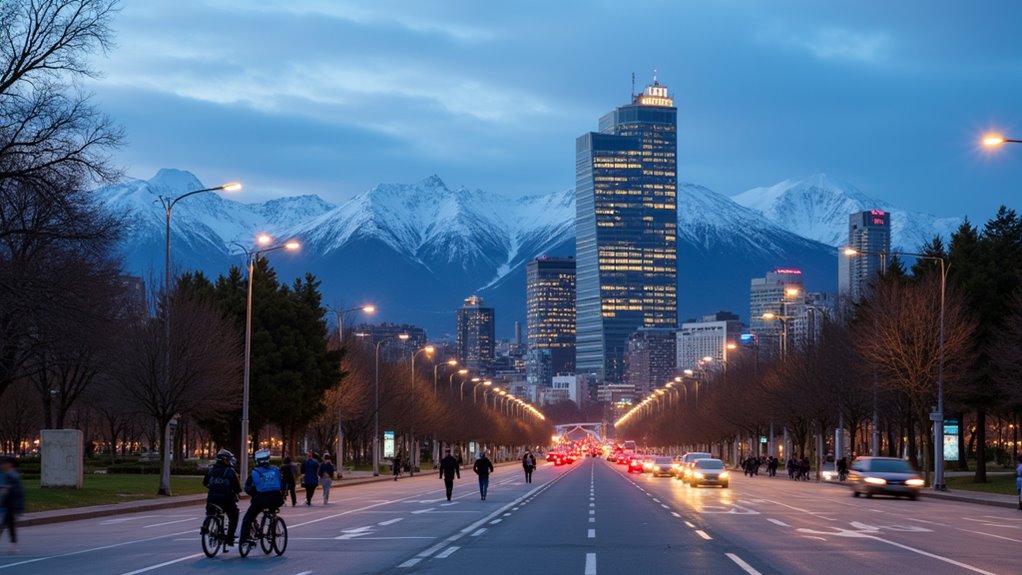
Santiago stands as Chile’s beacon of modernity and security in South America, though recent years have seen some shifts in its safety landscape. The city balances a moderate crime index of 63.7 with strong economic stability and robust urban development.
You’ll find a significant police presence throughout the metropolis, though organized crime has become more prevalent recently. Chile has experienced notable crime rate volatility with significant decreases in 2021 following increases in previous years.
Despite increasing crime concerns, Santiago remains relatively safer than many South American capitals.
South America offers impressive safe havens for your exploration. From Cuenca’s colonial charm to Santiago’s modern efficiency, these cities prove that safety and adventure can coexist. Like carefully polished gems in a diverse collection, each destination shines with its own unique appeal while providing peace of mind. Whether you’re drawn to Medellin’s transformation or Montevideo’s tranquility, you’ll find welcoming urban spaces that defy outdated stereotypes about the continent.